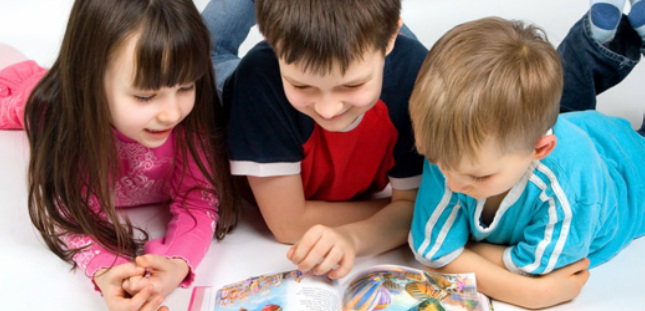|
The specific signs of dyslexia, both weaknesses and strengths, in any one individual will vary according to the age and educational level of that person. The five-year-old who can’t quite learn his letters becomes the six-year-old who can’t match sounds to letters and the fourteen-year-old who dreads reading out loud and the twenty-four-year-old who reads excruciatingly slowly. The threads persist throughout a person’s life. The earliest clues involve mostly spoken language. The very first clue to a language (and reading) problem may be delayed language. Once the child begins to speak, look for the following problems: The preschool years
Kindergarten and first grade
In addition to looking for indications of problems in speaking and reading, here are some indications of strengths to look for and applaud in your child:
Many of these indicate strengths in higher-level thinking processes. Excerpted and adapted from Overcoming Dyslexia: A New and Complete Science-Based Program for Reading Problems at Any Level http://www.readingrockets.org/article/70
0 Comments
Train up a child in the way he should go: and when he is old, he will not depart from it.—Proverbs 22:61 * One day before long, your children will be grown and gone. You’ll be thankful then that you gave them what they needed when they were growing up. It wasn’t easy, you sacrificed a lot, but it was worth it! Joy, a missionary and mother of a large family, put it this way: I’m looking at motherhood from another perspective now. I am beyond the initial years of diaper changing and midnight feeds, past potty time and a hundred scraped knees. I’m a grandma and a mommy rolled into one. My youngest children are still with me, but my eldest are married and have begun having children of their own. One blessed thought I want to share with younger parents as they face what looks like an insurmountable mountain of parenting is simply this: It’s worth it all! I get a wonderful feeling looking at my children who are now young adults, because I see how the Lord has worked in their lives. It gives me peace and a fresh vision for the little ones still in my arms. … So during those hours in the night while you are keeping watch over a sick child, smiling when you want to cry, singing as you pray for patience, wiping little noses while you dream of someday doing great things for God, just remember that you are. You will never regret one prayer, one song, one loving word. Each small act of love reaches out to them and touches them for eternity. After all the years of taking it all by faith, someday you—like me—will be blessed at seeing what they have become. —Derek and Michelle Brookes2 * Although love is essential to human life, parental responsibility extends far beyond it. Love in the absence of instruction will not produce a child with self-discipline, self-control, and respect for his fellow man. Affection and warmth underlie all mental and physical health, yet they do not eliminate the need for careful training and guidance. The greatest social disaster of this century is the belief that abundant love makes discipline unnecessary. Respectful and responsible children result from families where the proper combination of love and discipline is present. Discipline and love are not opposites; one is a function of the other. The parent must convince himself that punishment is not something he does to the child, it is something he does for the child. His attitude towards his disobedient youngster should be, “I love you too much to let you behave like that.” —James Dobson3 * King Solomon, in Psalm 127, describes our children as arrows in the hands of a young warrior. … Hmmm, I reflected, So that’s how I’m supposed to view my children ... as arrows! They are designed to have direction and purpose, and they’re supposed to carry with them the possibility of making an impact and a difference. I was just kind of carrying mine around in my quiver, hoping that one day they’d grow out of it and find a quiver of their own. … It quickly became obvious that the goals I needed to set for my children should cultivate their character rather than push them toward a particular career. I did not want to corner my youngsters into cozy little niches of my own design. Too many parents create boxes, then try to force their children to fit inside them. But those ill-fitting boxes hurt their kids’ hearts just as much as an ill-fitting pair of shoes would hurt their feet. Such stifled children sometimes end up with emotional blisters that eventually make it hard for them to walk or even stand up on their own. I decided to cherish principles, moral fiber, and integrity above grades, athletic prowess, and tidy bedrooms. To avoid establishing goals that were too restrictive or confining, I asked myself this question: Can my child either be a sitting judge or a standup comedian; a famous surgeon or a faithful garbage collector; an investment analyst or a lawn-care specialist—and still achieve the goals I have set for him? If I answered yes, then my goals were probably fair and my box was probably not too small. I decided to accomplish my goal-setting by listing three to five qualities that I wanted to see emerge as distinguishing characteristics in each child’s life by the time he left home. I knew I couldn’t handle many more than that! I included traits such as honesty, generosity, commitment to family, contentment, and the ability to function independently. They varied depending on the personality of each child and changed somewhat over time—depending sometimes on my maturation as a mom. … Completing this exercise provided definitive direction and purpose for my mothering. I found targets to shoot toward. If I noticed the negative traits I had chosen not to tolerate emerging in one of my sons’ lives, I knew it was time to intervene.—Gwendolyn Mitchell Diaz4 * If you think of your children as small and unimportant, you will talk with them about small, insignificant matters. You will communicate trivia to them. And their growth will reflect this dimension of talk. You will leave behind a generation of stunted dwarfs. On the other hand, if you see your children as future parents, future leaders, future men and women of God, and see them as growing daily toward this important role, you will do all in your power to shape their lives toward the grand objective of helping them become parents, leaders, and men and women of God.—V. Gilbert Beers5 * Love the Lord your God and keep his requirements, his decrees, his laws and his commands always. … Teach them to your children, talking about them when you sit at home and when you walk along the road, when you lie down and when you get up.—Deuteronomy 11:1, 196 Compilation courtesy of www.anchor.tfionline.com. Image from Wikimedia Commons.
References: 1 KJV. 2 Power for Parenthood (Aurora Production AG, 2001). 3 Dare to Discipline (Tyndale House Publishers, 1975). 4 Mighty Mom’s Secrets for Raising Super Kids (RiverOak Publishing, 2001). 5 Parents: Talk with Your Children (Harvest House Publishers, 1988). 6 NIV. Thomas Armstrong, PhD The theory of multiple intelligences was developed in 1983 by Dr. Howard Gardner, professor of education at Harvard University. It suggests that the traditional notion of intelligence, based on I.Q. testing, is far too limited. Instead, Dr. Gardner proposes eight different intelligences to account for a broader range of human potential in children and adults. These intelligences are:
Dr. Gardner says that our schools and culture focus most of their attention on linguistic and logical-mathematical intelligence. We esteem the highly articulate or logical people of our culture. However, Dr. Gardner says that we should also place equal attention on individuals who show gifts in the other intelligences: the artists, architects, musicians, naturalists, designers, dancers, therapists, entrepreneurs, and others who enrich the world in which we live. Unfortunately, many children who have these gifts don’t receive much reinforcement for them in school. Many of these kids, in fact, end up being labeled “learning disabled,” “ADD(attention deficit disorder) [sufferers],” or simply underachievers, when their unique ways of thinking and learning aren’t addressed by a heavily linguistic or logical-mathematical classroom. The theory of multiple intelligences proposes a major transformation in the way our schools are run. It suggests that teachers be trained to present their lessons in a wide variety of ways using music, cooperative learning, art activities, role-play, multimedia, field trips, inner reflection, and much more. The good news is that the theory of multiple intelligences has grabbed the attention of many educators, … and hundreds of schools are currently using its philosophy to redesign the way it educates children. The bad new is that there are thousands of schools still out there that teach in the same old dull way, through dry lectures, and boring worksheets and textbooks. The challenge is to get this information out to many more teachers, school administrators, and others who work with children, so that each child has the opportunity to learn in ways harmonious with their unique minds. The theory of multiple intelligences also has strong implications for adult learning and development. Many adults find themselves in jobs that do not make optimal use of their most highly developed intelligences (for example, the highly bodily-kinesthetic individual who is stuck in a linguistic or logical desk job when he or she would be much happier in a job where they could move around, such as a recreational leader, a forest ranger, or physical therapist). The theory of multiple intelligences gives adults a whole new way to look at their lives, examining potentials that they left behind in their childhood (such as a love for art or drama) but now have the opportunity to develop through courses, hobbies, or other programs of self-development. How to Teach or Learn Anything 8 Different Ways One of the most remarkable features of the theory of multiple intelligences is how it provides eight different potential pathways to learning. If a teacher is having difficulty reaching a student in the more traditional linguistic or logical ways of instruction, the theory of multiple intelligences suggests several other ways in which the material might be presented to facilitate effective learning. Whether you are a kindergarten teacher, a graduate school instructor, or an adult learner seeking better ways of pursuing self-study on any subject of interest, the same basic guidelines apply. Whatever you are teaching or learning, see how you might connect it with…
For example, if you’re teaching or learning about the law of supply and demand in economics, you might read about it (linguistic), study mathematical formulas that express it (logical-mathematical), examine a graphic chart that illustrates the principle (spatial), observe the law in the natural world (naturalist) or in the human world of commerce (interpersonal); examine the law in terms of your own body [e.g. when you supply your body with lots of food, the hunger demand goes down; when there’s very little supply, your stomach’s demand for food goes way up and you get hungry] (bodily-kinesthetic and intrapersonal); and/or write a song (or find an existing song) that demonstrates the law. You don’t have to teach or learn something in all eight ways, just see what the possibilities are, and then decide which particular pathways interest you the most, or seem to be the most effective teaching or learning tools. The theory of multiple intelligences is so intriguing because it expands our horizon of available teaching/learning tools beyond the conventional linguistic and logical methods used in most schools (e.g. lecture, textbooks, writing assignments, formulas, etc.). To get started, put the topic of whatever you’re interested in teaching or learning about in the center of a blank sheet of paper, and draw eight straight lines or “spokes” radiating out from this topic. Label each line with a different intelligence. Then start brainstorming ideas for teaching or learning that topic and write down ideas next to each intelligence (this is a spatial-linguistic approach of brainstorming; you might want to do this in other ways as well, using a tape-recorder, having a group brainstorming session, etc.). Have fun! Excerpted from http://thomasarmstrong.com/multiple_intelligences.htm.
 By Anna Theresa Koltes It was a perfect spring day. A gentle wind, warm and coaxing, announced the arrival of the season. Everyone around me was in a good mood. But it’s often on days like these, when we least see it coming, that God tends to surprise us with a little learning. That morning, I received an unexpected letter from a friend. It contained a substantial smudge of bad news—enough to sink my happy boat and pull a few more down with it. I was devastated. Suddenly everyone else’s cheeriness was aggravating. I wished they would all just go away and take the sunshine with them. All kinds of dark and inconvenient thoughts were wading through my mind when my neighbor called. “The doctor’s office rescheduled my appointment to earlier this afternoon, but I have a problem. There won’t be anyone home to watch Valerie. Do you think you could hang out with her till I get back?” My boat let out its last sputter before sinking. Babysit? Me? The last thing I wanted was to pollute a child’s youthful innocence with my wretched mood. I tried to get out of it but finally accepted. Poor child! In a bit, I found myself standing in their flat, feeling stressed and grumpy. Valerie bounded in. “I’ve got new crayons!” she exclaimed. She was smiling, and I forced myself to do the same. “You mean … coloring?” She nodded, before disappearing and returning a wink later with a red suitcase bursting with drawing materials. Honestly, I didn’t much feel like coloring, but I kicked myself and helped Valerie dump everything onto the table. We put on a Tchaikovsky CD and got to work coloring a picture of a wild woman with multicolored flowing hair. Surprisingly enough, time flew by, as I was carried away into a utopia of classical music and art. Well, I don’t know if you would call that “art,” so let’s settle for “therapy.” By the time three hours had passed, we’d created more than a few abstract masterpieces, listened to a whole lot of Swan Lake, and I’d found peace. With a clear mind, I realized that even when there are great disappointments or catastrophes in our lives, there is always a solution. Mine was simple. Unexpected. Refreshing. And highly recommended. Text and image courtesy of Activated! magazine. Used with permission.
Marilyn Rockett Is the behavior of your children a deterrent to happy, joyful entertaining? Practice a nice meal without guests but with all the proper silverware and place settings. Teach everyone how to properly pass food at the table and to offer dishes to others before taking a portion for themselves. Teach your young men to pull out a chair for a lady. Dress up for dinner. Your valuable instruction now, in the safe and caring setting of your home, will save unnecessary embarrassment when children are in public or at someone else’s home for dinner. Additionally, is there any reason your family shouldn’t practice most of these good table manners in your home every day? It takes your constant instruction on a routine basis to teach children to sit up to the table, not stand up in their chairs, keep their elbows off the table, chew their food well, not talk with their mouths full, and generally be polite. Practice doesn’t make perfect; only perfect practice makes perfect. If you only expect good manners during company situations, children won’t remember how they are to behave at other times. You may feel like a broken record or a scratched CD at times, continually reminding your children about their manners, but this is an important long-term effort. Young adults who reach eighteen and still don’t know or recognize proper etiquette will experience life hindrances. Remember the question: If I don’t teach [a certain skill], will the lack of that knowledge be harmful or a hindrance to them later in life? Perhaps good etiquette wasn’t part of your early training. If not, buy a good etiquette book and learn with your children. Good manners books specifically for children are available at various online bookstores. The most important rule of good etiquette—more important than which fork to use—is always to think of the other person’s needs. Do what makes someone else comfortable, and you will rarely go wrong. Courtesy of Homeschooling at the Speed of Life: Balancing Home, School, and Family in the Real World. B&H Books (2007)
Words are not the only way to communicate your love and win your teens’ trust. There are a lot of other ways. Try to catch their eyes. Use your eyes to show them your love. Don’t give them an accusatory or hurt look which probes for guilt or wrong—but give them loving, understanding, encouraging looks. Let them hear by the tone of your voice that you do love them and you do understand. Actually, it is not how much you communicate with them but that you do communicate with them. Try to touch base with them in some way each day—via a look, a touch, an encouraging word—then build on this. It will grow! Give them the help and support they need. At this age they are very insecure and feel like they are being tossed on a troubled sea. They are looking for the lighthouse. Be their beacon! They can count on you There will be times when you will have to lay down the line and be firm with your teens as you guide and correct them, but as they grow, you will have less of a direct influence over their lives. Your role will change from their parent to their friend—not an “anything goes” friend, but one who loves them enough to be honest with them—someone they can count on, someone who is more a helping hand than a judge—someone they can lean on, rather than someone they have to avoid or hide their life from or try to get around. Help them know they can really count on you. You build their confidence in you by being faithful in all those little things that add up in their mind to the kind of person they believe you should be. If you’ve made a mistake and flown off the handle, if you have been too extreme with them, if you have scared them off or driven them into their own world, then go to them and apologize. Explain that you want to change and you want to be different. If you are humble and you show that you know you have weaknesses and need help in many areas too, then even if your teens don’t show it, they will have seen you put your heart on the line and trust them with a sensitive part of your life, and this will encourage them. They do need your help, they want your help, but they want it on their terms—when they want it and how they want it. Of course, sometimes when they are in trouble and you see they are in trouble, you do need to intercede. Go to them directly and explain the situation as you see it. Communication alternatives If your teen doesn’t respond to your efforts to communicate, perhaps he (or she) just isn’t able to talk to you face to face, especially if you aren’t very good at controlling your anger or emotions, and therefore they’re afraid of how you might react. If this is the case, then encourage him to write you a note, or to record his thoughts on a tape recorder or dictaphone, and give you the tape to listen to. That way you can “hear” him out without him experiencing your initial reaction head-on. You have time to think things over, he has time to think things over, and you can have a discussion later in a calmer frame of mind, or answer him in a note if you like. Guide rather than intrude Young people are unsure of a great many things, and so sometimes they jealously protect the “garden” of their lives from intrusion. They are not sure which are the weeds and which are the good plants, but they are sure they do not want you stomping into their life and pulling out what you think are weeds. They want to make those decisions for themselves. They may like to have your guidance, but constant intrusion into their lives is not usually what they want. Love despite silence A parent should try not to be put off by silence. Keep putting your heart into talking and communicating with your teens. Give them a few signs of affection—a hug, a kiss, a touch or pat, an expression of warmth. Just let them know you are there, that you care, that it is okay, you are listening, you are watching out for them. All these help them feel more secure, even if they do not openly admit it or react as if they do. Sometimes they do not want to react or show too much weakness to you, because they know that will bring out the parent side in you and put them right back in the role of being children. Cherish your moments together Keep reminding yourself that your teens are growing up and may soon go their own way, so the moments you have together are precious and should be positive and memorable ones you can all look back on and cherish. Don’t fight over trivial matters. It is just not important. Even if you think it is important to have an argument about something—stop! First try to love them. Show them love, even in a storm. Love never fails! You may be very upset, but they are likely worried and confused too. Arguments fail! Expectations fail. Giving orders fails. But love never fails. Try to get past your anger. Try not to be too set in your ways and too predictable in your negative reactions. Only be predictable in your love for your teens. If they are secure in your love, this will be a good foundation upon which problems can be worked out. Stay open, approachable and give them opportunities to talk to you. Step back! Let them breathe! Surprise your teens by making changes—changes in your life and attitude and way of looking at things. Surprise them with all kinds of interesting differences. Young people want to be proud of their parents. They want to feel that their parents are cool, but even more than that, they are looking for something warm, supportive and understanding in you—someone who is there, right there praying for them, standing beside them—not like a blanket suffocating them, but like an umbrella protecting them. If you are the type of parent that likes to take control, that grabs the pencil away from them to show them how you’d do it, then you must learn to let go of that desire for direct management of their lives. Step back! Let them breathe. They know what you believe. By now you have certainly told them enough times. Just turning up the volume now, yelling at them, or forcing them, or being harsh or critical or negative, or speaking as though you expect the worst, is the worst and will get the worst results. They may just tune you out and stop listening. Their life is sacred. It does not belong to you; it belongs to them. And there comes a time when you have to move back and give the controls to them. Let them row their boat. Let them learn to drive the vehicle of their life. But be there to help, and encourage them as they learn. Don’t be too quick to grab the controls away from them. It’s too late for that. They’re growing and they’re going to be venturing out on their own whether you like it or not. It is hard to step out of the role of their boss, but you must. However, do not go to the opposite extreme and become so passive and detached they think you just don’t care. Step back and into the role of friend, supporter, cheerleader, avid fan, admirer, the one who believes in them, the one who loves them unconditionally even when they don’t reach their expectations—or yours. Show positive expectations It’s unfortunate, but young people often act out your negative expectations. It’s better to try to show positive expectations and hide your disappointment. Positive expectations move them toward the good and convict them when they do wrong, because they don’t want to disappoint you or cause you to lose faith in them. On the other hand, if they feel your negative suspicions, accusations or assumptions, they may tend to go that way. (Simply put, it is easier to be bad if someone expects you to be bad, but it is easier to be good if someone believes in you and expects you to be good.) See mistakes as steppingstones Everyone makes mistakes. Parents can’t expect saints from sinners like themselves. Let your teens know that you’re a sinner too, and you also have to learn from your mistakes. Young people make a lot of mistakes, and they feel bad about them, but don’t rub it in. Try to help them be glad for the chance to learn such valuable lessons early in life. Look for the good that can be drawn from each situation, and help them look for the good. If you look for the good in everything, including them, they will see a lot of good in you. Let them row their boat while you cheer them on Try to help and encourage your teens in those areas that are strengths in their lives, but don’t push too hard. You might want them to have a certain education or special training; you might want them to have what you missed. But there comes a time to put aside your ideas and look at what your teen wants and is able to do. Pushing can be perceived as overriding her will and her rights. Your idea may be the best for her, it may be her area of talent, but she likes to feel it is her choice what talent she wants to develop, a part of her inner joy and development. It is hard to change your teens without changing yourself. There may seem to be no way to break through to them. They know you too well as their parent and have their guard up to protect themselves from your “parenting.” But when you come to them as a friend, they will not be as closed. If you approach them as someone who loves them and cares for them, as someone who sees them as a person, that is what they want. That respect, recognition, support and understanding means a lot to them. Those are the building blocks that make them more secure in their march to manhood or womanhood. Excerpted from "Parenteening" by Derek and Michelle Brookes. © Aurora Productions. Photo courtesy of Activated! magazine.
Toby Leah Bochan
Why extra-curriculars matter After-school activities benefit your child in ways that might surprise you. According to a recent study by the Nellie Mae Education Foundation, children who participate in after-school programs are more engaged in and have a better attitude about learning, perform better academically, and enjoy an increased sense of accomplishment, competence, and self-esteem. Participation also lowers children’s risk of becoming depressed, using drugs and alcohol, and experiencing other behavioral problems. Extra-curriculars let your child enjoy himself in a fun, stress-free environment, get some exercise, and make friends outside of school. If he shows a special talent, it’s great to nurture that ability through lessons or classes. But don’t think that an early start in anything will lead to a career—remember that most children do not grow up to be professional musicians or athletes. Pushing your child into tons of tennis lessons or dance classes in order to give him a “head start” will most likely lead to him resenting both you and the activity. Give him other options and encourage other interests, so he doesn’t feel an overwhelming pressure to succeed at just one thing. How to Find Start your search at your child’s school. Ask his teacher or the principal what options are available there. It’s also important to talk to other parents about what their children are involved in and get recommendations for kid-tested classes and activities. Also check out community resources such as:
You might also find listings in your phone book under “Child Care.” How to Choose After you have an idea of the possibilities, talk with your child about what he’s interested in. Give him some options that complement his interests—an artistic child might enjoy a ceramics class, while a boisterous one can work off energy dancing or playing a vigorous sport. But don’t overlook what might seem like unlikely matches. Shy children often enjoy expressing themselves on stage in a drama class; fidgeters can find a way to focus through martial arts. You can also target specific skills through different activities: music lessons enhance math aptitude, and team sports boost social skills. If your child will attend a daily after-school program, try to select one that offers a variety of activities, including ones that get him on his feet, as well as a quiet area to relax and do schoolwork. Also consider your family’s schedule when planning extra-curriculars. Will adding an activity adversely affect family time? Will you, a caregiver, or another family member be available to chauffeur your child to and from classes and lessons? If not, consider activities that can be done at home, such as music lessons and crafts, or those that are held at school. Review the “Grade-by-grade at a glance” (below) for guidelines on how often your child might spend time in an after-school program. But there’s no one-size-fits-all answer, and it’s important to watch your child for signs of over-scheduling. In younger children, this most often takes the form of irritability, avoiding eye contact, and tantrums. In older children, look out for mood swings, recurrent sickness such as stomachaches, and complaints about the activities themselves. At any age, if schoolwork begins to suffer, it is time to cut back. Once you’ve narrowed down the options, visit them while they are in session so you can get a real idea about the environment, the staff, and the program. When you visit, look for:
Grade-by-grade at a glance Wondering how many days a week your 2nd grader should be practicing the guitar? Searching for good ideas for after-school programs for your 10 year old? Use the following guidelines to steer your decisions—but remember that you know your child’s maturity and temperament best. Kindergarten Keep your kindergartener’s after-school life simple and free—one or two after-school activities a week are more than enough. Wait until he’s adjusted to the daily school routine. Then find an extra-curricular that involves his creative and/or physical side, such as an art, dance, or music program. Grade 1 Balance your 1st grader’s schedule with play dates, playground visits, and one or two days of an after-school activity per week. Best bets are non-competitive sports and other physical activities since this is around the age when your child is starting to get a grip on the abilities of her own body. Plus, after being in school all day, she needs an outlet to play and run. Avoid sports with strict rules. At this age, she needs free reign to make mistakes and not worry about winning and losing. Grade 2 Get your child involved in choosing extra-curriculars. He’ll probably tell you what he’d like to do anyway! Steer him towards activities that he likes and doesn’t get to do at school, whether it’s sports such as swimming or skating, computers, or art or music lessons. Many kids start learning piano or violin around this age. Make sure your child has at least one or two days free a week for alone time, which he is starting to need to unwind. If after-school activities are starting to interfere with schoolwork or if your child seems stressed, you need to drop an activity or two. Grade 3 After sitting all day in a classroom, your 3rd grader needs to move and socialize after school. Team sports are a great choice—now she’s old enough to remember and follow rules and can handle losing (though she’s still not ready for anything ultra-competitive). Other good choices are activities that use and develop fine motor skills, such as painting, sewing, or learning to play an instrument. Let her explore different interests but make sure to set aside still-needed family time among the team practices and play dates. Grade 4 Try to get your 4th grader involved in one or two extra-curricular activities that he is good at and loves doing. It will build confidence and help him manage stress, which is key at this age when cliques and social pressure in school are beginning to build. Another thing that’s growing is his pile of homework, so make sure he has adequate time to complete his work without having to stay up late. Set limits on seeing friends and activities if he is often crabby and irritable, if his grades drop, if he has trouble sleeping or complains of mysterious illnesses, or if he shows other signs of stress like overeating. Don’t put too much pressure on him to excel at what should be fun activities. Otherwise he will end up resenting the time he spends doing them instead of playing and exploring. Last, don’t forget family together time is still essential. It may need to be scheduled in so your child understands that it’s important. Grade 5 Over-scheduling is a problem you and your child will probably face this year. Your 5th grader is full of energy for everything and wants to spend all her time participating in activities and hanging out with friends. To ensure she’s completing her schoolwork and not becoming burnt out, you should make sure she has two free afternoons a week. While you’re at it, block out a once-a-week family time that you and your child stick to so she remembers that family is a priority. She should be guiding her own activity choices, but now is a great time to suggest community service activities like helping senior citizens or young children. Middle School Try to steer your middle-schooler toward activities that reinforce learning and get him away from the TV. On average, middle-schoolers spend an equal amount of time every week watching TV and socializing with friends—about 20-25 hours apiece. To improve academic performance, encourage your preteen to spend time volunteering, to join school clubs like band, chess, or foreign language clubs, or to sign up for extra-curriculars with a leadership element, such as the school newspaper or student council. It will help him feel more connected to the school community while forging friendships based in common interests and experiences. As always, keep an eye out for signs that he is over-extending himself with after-school commitments. As a general rule, he should be spending fewer than 20 hours a week participating in after-school activities. No one would argue that raising children of character demands time and effort. While having children may be doing what comes naturally, being a good parent is much more complicated. If you want to know how to raise a child, follow these steps.
Method 1 of 4: Developing a Healthy Routine Put parenting first. This is hard to do in a world with so many competing demands. Good parents consciously plan and devote time to parenting. They make developing their child’s character their top priority. Once you're a parent, you have to learn to put your priorities below your children's, and to make the sacrifice to spending more of your day caring for them than you do caring for yourself. Of course, you shouldn't neglect yourself completely, but you should get accustomed to the idea of putting your child's needs first. If you have a spouse, then you can take turns caring for the child so each of you can have some "me time." When you plan your weekly routine, your child's needs should be your primary focus. Read to your child every day. Helping to nurture a love for the written word will help your child to develop a love for reading later on. Set a time for reading for your child every day -- typically around bed time or nap time. Spend at least half an hour to an hour reading to your child each day, if not more. Not only will your child develop a love for words, but your child will have a better chance of both academic and behavioral success. Studies show that children that were read to on a daily basis demonstrate less bad behavior in school. Eat dinner as a family. One of the most dangerous trends in the modern family is the dying of the family meal. The dinner table is not only a place of sustenance and family business but also a place for the teaching and passing on of our values. Manners and rules are subtly absorbed over the table. Family mealtime should communicate and sustain ideals that children will draw on throughout their lives. If your child is a picky eater, don't spend dinner time criticizing your child's eating habits and watching what he or she doesn't eat like a hawk. This will lead your child to have a negative association with family meals. Get your child involved in the meal. Dinner will be more fun if your child "helps" you pick out food at the grocery store or helps you set up the table or to do small food-related tasks, such as washing the vegetables you will cook. Keep dinner conversation open and light. Don't give your child the third-degree. Simply ask, "How was your day?" Set a strict bedtime routine. Though your child doesn't have to go to bed during the same five-minute stretch every single night, you should set a bedtime routine that your child can follow and stick to it. Studies show that children's cognitive abilities can drop two full grade levels after just one missed hour of sleep, so it's important that they get as much rest as they can before you send them to school. Your routine should include some winding-down time. Turn off the TV, music, or any electronics, and either talk to your child softly in bed or read to him. Don't give your child sugary snacks right before bed or it'll be harder to get him to sleep. Encourage your child to develop skills each week. Though you don't have to sign your child up for ten different activities each week, you should find at least one or two activities that your child loves to do and incorporate them into your child's weekly routine. This can be anything from soccer to art class -- it really doesn't matter, as long as your child shows a talent or a love for something. Tell your child what a great job he's doing and encourage him to keep going. Taking your child to different lessons will also help him or her socialize with other children. Don't get lazy. If your child complains that she doesn't want to go to piano lessons, but you know she likes it deep down, don't give in just because you don't feel like driving over there. Give your child enough play time every day. "Play time" does not mean having your child sit in front of the TV and suck on a building block while you do the dishes. "Play time" means letting your child sit in his room or play area and to actively engage with stimulating toys while you help him explore their possibilities. Though you may be tired, it's important that you show your child the benefits of playing with his toys so he gets the stimulation he needs and so he learns to play with them on his own. It doesn't matter if you don't have 80 million toys for your child to play with. It's the quality, not the quantity of the toys that counts. And you may find that your child's favorite toy of the month is an empty toilet paper roll. Method 2 of 4: Loving Your Child Learn to listen to your children. Influencing their lives is one of the greatest things you can do. It is easy to tune out our children, and a missed opportunity for meaningful guidance. If you never listen to your children and spend all of your time barking orders at them, they won't feel respected or cared for. |
Categories
All
Archives
March 2024
LinksFree Children's Stories |








 RSS Feed
RSS Feed
